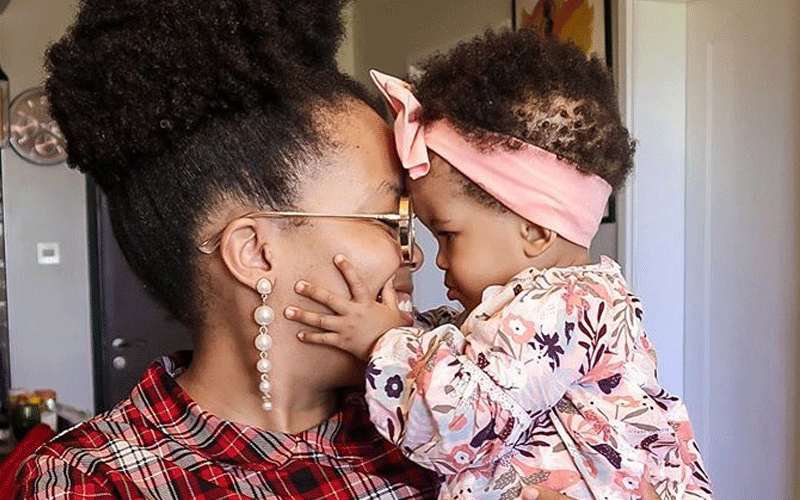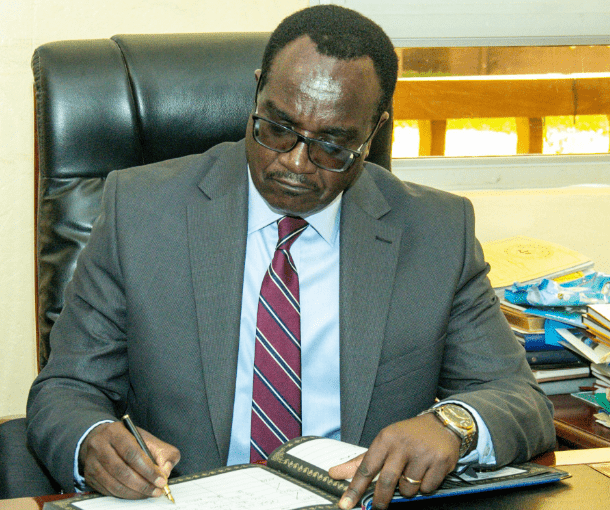After a devastating birth injury, hope

Betty Muindi @BettyMuindi
While everyone else was ringing in the New Year, watching fireworks all night, tucking into tasty meals with loved ones and partying the day away with friends on January 1, 2019, Chantelle Waceke was welcoming her newborn into the world.
The journey to bringing her bundle of joy was anything, but blissful.
“I was woken up by painful cramps around my lower abdomen. When I went to the loo to pee, I saw brown, slimy discharge.
It didn’t look right. I remembered my gynaecologist had told me that if I saw anything unusual, I should know I am in labour. I went to the hospital,” she narrates.
Soon after she arrived at the hospital, it became obvious this was not going to be an easy birth.
A vaginal examination to check her contractions revealed a brown and bloody discharge, and she was told her baby had pooped in the womb and was at high risk to either inhale or aspirate meconium into its lungs.
Immediately, she was scheduled for an emergency caeserian section.
But there was another complication. The hospital had only two theatres, which were fully occupied. She was made to wait. The doctors walked in often to check on her as she laboured.
“I had a great urge to push. I could feel my baby’s head in my vagina. When I was checked again, I had dilated to nine centimetres, which meant, much to my relief, I wouldn’t have to go under the knife anymore,” says the 27-year-old single mother.
After another two hours of labour and one hour of pushing, Wacheke had sustained a severe birth injury: she was given an episiotomy, which resulted to a fourth degree tear, which means the skin from her vagina to her anal sphincter had ripped apart when her baby was pulled out.
Further surgeries
The delivering doctor’s first attempts at repairing the episiotomy was not successful. The resulting fistula tear was complex, and would need further surgeries.
“I was handed over to a female gynaecologist who scheduled me for surgery the following day with a tear specialist to stitch the tear and episiotomy,” she recalls.
Her daughter too had a birth complication known as birth asphyxia due to delayed delivery that required her to stay in an incubator on cold therapy for eight days while taking medication to cure sepsis.
“I got discharged a few days later, but I was still in a lot of pain and I could tell something wasn’t right. I opted to stay in the hospital as a lodger to care for my daughter and to receive medical attention,” she explains.
She then started noticing brown lumps when she passed urine, which made her inquire if there was a problem.
Upon examination, they found a four centimetre recto-vaginal fistula. curable by surgery.
She was scheduled for a third surgery on January, 16 2019, which was more of an examination to see the state of her wound and whether it’s fixable on the date. For this procedure she was handed over to a private practitioner as the flesh was too damaged.
“The doctor instructed I get nursing care daily to clean the wound to speed up the healing. My daughter and I got discharged at the end of January,” she says.
After a month of nursing care at home, Chantelle’s wound had healed and ready for repair so she got admitted again for the fistula repair on February 26. After a month, she was let go, completely closed and dry.
Now over a year after surgery, Chantelle’s months of sadness have turned to endless joy.
Support group
“Despite having lost my job at three months pregnant, the painful birth experience, feeling the pressure to do normal mum things for my child even though I wasn’t your typical ‘normal’ mum at the time, was especially challenging,” she says, “I had no energy, I was in a lot of pain and I needed time to rest and heal.”
Her biggest fear was getting Postpartum depression (PPD). Fortunately, while at the hospital, Chantelle would consult with PPD Kenya, an online platform that seeks to raise awareness on condition.
“The lady really walked the journey with me and reassured me that it all gets better.
My family also played a big role in supporting me and ensuring my mental health was intact while going through what I went through,” she explains.
All through her birthing journey, the digital marketer, influencer and entrepreneur, running her Ella Summers, a children’s store and Get Your Treats, a food business, was documenting her experiences.
Her efforts earned her the She Can Awards from Kotex in March 2019. In June 2019, she was also invited to speak at a conference hosted by the Kenya Institute for Public Policy Research and Analysis where she outlined what receiving healthcare in Kenya is like for the common citizen.
It’s Chantelle’s hope that her efforts will inspire positive change in the medical industry, which will ensure equal access to quality healthcare for all.








